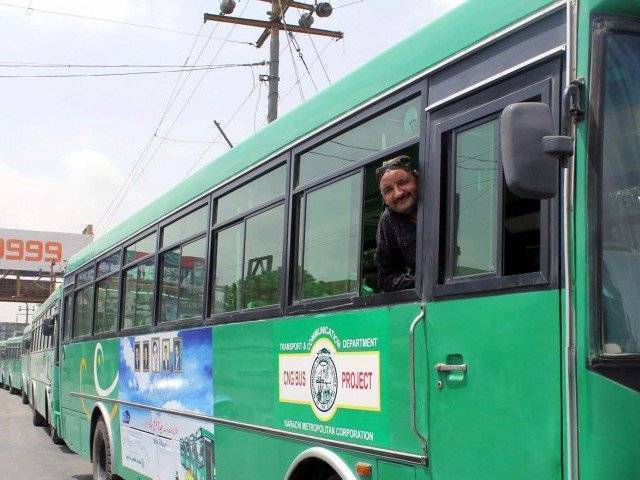
The problem was highlighted in a 150-page design document of the BRT, which was obtained by The Express Tribune.
Bus Rapid Transport: Bahria Town, Chinese group ink Karachi transport deal
The same documents stated the main objective of the BRT system was to overcome slow public transport vehicles which had proved a nuisance for commuters.
They expressed concern over security checkpoints which caused delays in Peshawar traffic. Currently, there are 10 checkpoints located in the city and some of them operate on a temporary basis.
The locations of checkpoints include Khyber Road, Gora Qabristan, Railway Road, Mall Road, Mall Road West, Fakhar-e-Alam Road, Mall Road East, Bara Road, Hayatabad, Karkhano and Peshawar Press Club.
“Since these checkpoints might be a problem for the BRT, there needs to be a measure to exclude [the project’s] buses from being stopped without posing a threat to security.”
However, there were no suggestions in the documents to address the issue despite the fact that the draft of the preliminary design, available with The Express Tribune, is considered the final version of the BRT to be executed after approval.
Red tape delays Karachi's Blue Line BRT
When Adviser to Chief Minister on Information Mushtaq Ghani was contacted by The Express Tribune, he said discussions were under way to sort out the issue of checkpoints delaying BRT buses.
When asked if institutions were taken on board in the design of the project, he said security would be ensured at all costs. He added security institutions had indeed been consulted over the execution of the project. He said one of the solutions could involve checking the buses at stations.
The corridor of the BRT system will be constructed on a proposed route from Chamkani to Karkhano Market through Khyber Bazaar. It will be at-grade through most of the project, while some areas will see elevated and underground corridors.
The total length of the corridor is 27 kilometres, with an at-grade section of 23 kilometres and an elevated portion of four kilometres. This may be extended to six kilometres with the construction of 27 BRT stations.
Construction work on the project was scheduled to begin in January 2017 and expected to be completed by the end of the same year.
To obtain the speed data of all six current modes of public transport, a survey was conducted of minibuses, wagons, rocket buses, vans, university wagons and rickshaws.
Karachi’s Green Line bus will be more beautiful than Lahore metro: PM
Survey data revealed that buses ply slower than 12km per hour on most parts of the trunk line in Peshawar. According to the documents, this snail’s pace was due to them running on slow lanes along GT Road to pick up passengers.
Another reason, the documents stated, were the delays caused by security checkpoints and traffic along Khyber and Saddar bazaars. Another factor was the excess of number of bus stops.
Furthermore, Ring Road, which offers a signal-free road, is able to get buses up to 20km per hour, while wagons travel at a speed as low as 9.4km per hour to 20km per hour.
The main objective of the BRT is to save time of the passengers, the documents read. “The BRT system can increase bus travel speed and it should be built along a corridor where commuters usually suffer delays.”
Published in The Express Tribune, September 5th, 2016.
1732434981-0/BeFunky-collage-(10)1732434981-0-405x300.webp)










COMMENTS (2)
Comments are moderated and generally will be posted if they are on-topic and not abusive.
For more information, please see our Comments FAQ